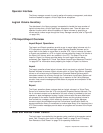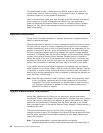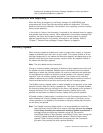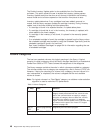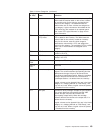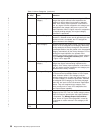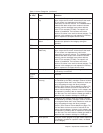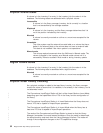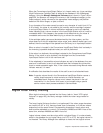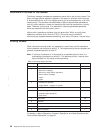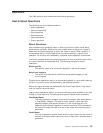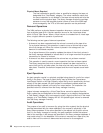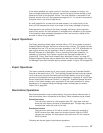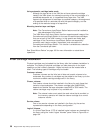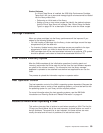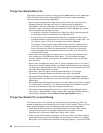
When the Convenience Input⁄Output Station is in Import mode, any J-type cartridge
(High-Performance Cartridge Tape) is added to the database in the Unassigned
category. Using the Manage Unassigned Volumes panel, shown in Figure 129 on
page 202, the operator can assign the volumes in the Unassigned category to the
Import category, assign volumes to the appropriate Insert category and partition
based on the volser ranges, or eject a volume.
If any character of the volser cannot be read or any character is invalid (not A–Z or
0–9 or blank), the volser is not added to the inventory and the cartridge is ejected
to an Input/Output Station. A volume notification message is sent to all attached
hosts indicating that a volume remains in the Input/Output Station with an invalid or
unreadable label. If this happens, the operator must determine why the volser is
unreadable and correct the label before trying to reinsert the cartridge.
If the cartridge media type cannot be determined by the vision system, and the
volser does not fit into an established volser range, and a default media type is not
defined, then the cartridge will be ejected from the library to an input/output station.
When a volser is inserted in the Convenience Input⁄Output Station that is already in
the inventory (a possible duplicate volser), an audit is performed.
If the volser is a duplicate, the cartridge is ejected to the Convenience Input⁄Output
Station. If the volser is not a duplicate, the cartridge from the Convenience
Input⁄Output Station is left in the new home cell.
If the
misplaced
or
inaccessible volume
indicators are set in the database, they are
reset and a notification is sent to all attached hosts that indicates the volume was
found or made accessible again. Also, if the
volume was used during Manual mode
indicator was set, it is reset.
A notification that describes the results of the audit is sent to all attached hosts.
Note: A service volume found in the Convenience Input⁄Output Station causes a
validity check because its volser contains an invalid character—an
embedded blank. A service volume must, instead, be placed in the cell
reserved for it in the Control Unit frame, or be inserted using a special
service volume insert process available in Service Mode.
Logical Volser Validity Checking
When logical volumes are inserted into the library (refer to “Insert VTS Logical
Volumes” on page 163), the library manager checks the volser range values for
validity.
The Insert Logical Volumes function is not performed if the volser range characters
are invalid (not A-Z or 0-9), there are fewer than 6 characters, or if the two volsers
entered are not the same format. Corresponding characters in each volser must
both be either alphabetic or numeric. For example, AAA998 and AAB114 are of the
same form, whereas AA9998 and AAB114 are not.
Logical volume volsers must be unique within a physical library. If a volser already
exists in the database for any logical library (non-VTS or VTS), the logical volume is
not inserted. The Library Manager then attempts to insert the next logical volume.
Chapter 3. Operational Characteristics 53
|
|
|
|
|
|



